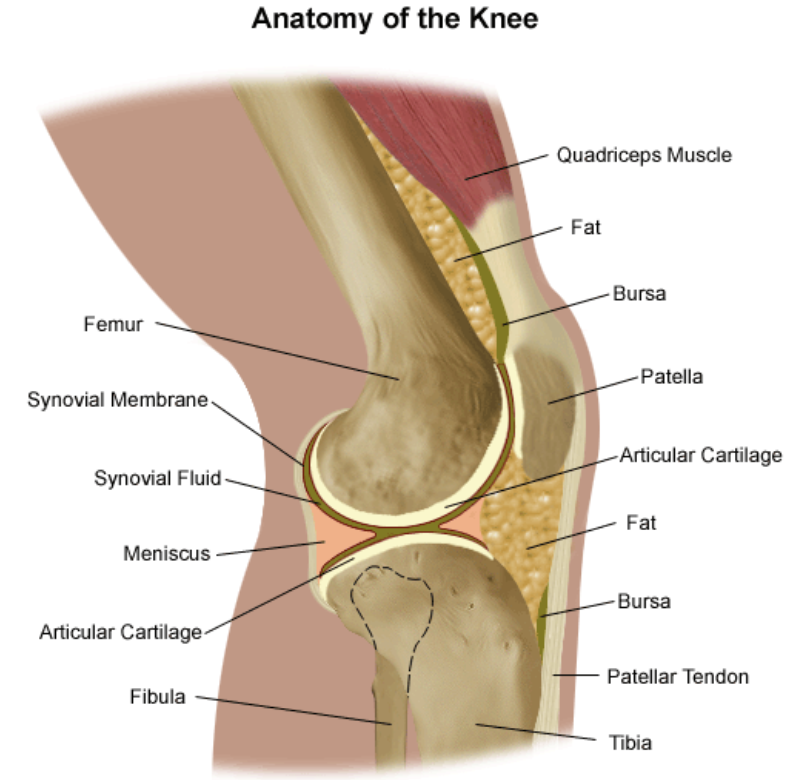Today, we’re delving deep into a topic that’s crucial for anyone looking to maintain a healthy, injury-free lower body – the knee. In this blog post, we’ll explore the intricate anatomy of the knee, the vital importance of knee mobility, and the fascinating correlation between the hip, knee, and foot.
The Knee: An Engineering Marvel
The knee joint is nothing short of an engineering marvel. It’s the largest joint in the body and plays a pivotal role in supporting our weight, facilitating movement, and absorbing shock. Understanding its structure is the first step in appreciating its significance.
Anatomy 101: Breaking Down the Knee
- Bones: The knee is primarily formed by the femur (thigh bone), tibia (shin bone), and patella (kneecap). These bones work together in a complex interplay to provide stability and mobility.
- Ligaments: Cruciate and collateral ligaments provide stability to the knee. The anterior cruciate ligament (ACL) and posterior cruciate ligament (PCL) prevent excessive forward and backward movement, while the medial collateral ligament (MCL) and lateral collateral ligament (LCL) guard against side-to-side motion.
- Meniscus: Two crescent-shaped cartilage structures, known as the medial and lateral menisci, act as shock absorbers and enhance joint stability.
- Muscles: The muscles around the knee, including the quadriceps, hamstrings, and calf muscles, are essential for both movement and protection of the joint.
The Importance of Knee Mobility
Now that we’ve dissected the knee’s anatomy, let’s dive into why knee mobility is so crucial, especially for runners.
1. Injury Prevention:
- Reduced Strain: Adequate knee mobility ensures that the forces generated during running are distributed evenly, reducing the risk of overuse injuries.
- Proper Alignment: Mobile knees promote proper alignment, which can prevent issues such as patellofemoral pain syndrome and iliotibial band syndrome.
2. Enhanced Performance:
- Full Range of Motion: Improved knee mobility allows for a fuller range of motion, potentially increasing stride length and running efficiency.
- Shock Absorption: Mobile knees aid in shock absorption, reducing the impact on joints and potentially enhancing endurance.
3. Post-Injury Rehabilitation:
- Recovery: After a knee injury, mobility exercises are often a key component of rehabilitation programs. Restoring mobility is vital for a successful recovery.
The Hip-Knee-Foot Connection
Now, let’s uncover the fascinating connection between the hip, knee, and foot. These three areas form a biomechanical chain, and any disruption in one can affect the others.
1. Hip-Knee Connection:
- Alignment Matters: Proper hip alignment is essential for knee health. Weak or imbalanced hip muscles can lead to poor knee tracking and increased stress on the joint.
- Range of Motion: Adequate hip mobility enables smooth running mechanics, reducing the likelihood of compensatory movements that strain the knee.
2. Knee-Foot Connection:
- Foot Arch Support: The feet play a crucial role in maintaining knee alignment. Issues like overpronation or supination can lead to poor knee tracking.
- Shock Absorption: Healthy feet help absorb shock during running, reducing the impact on the knees.
Putting It All Together
In the world of physiotherapy and running, it’s not just about the destination; it’s about the journey. The journey to knee health involves understanding its anatomy, prioritizing mobility, and recognizing the interconnectedness of the hip, knee, and foot.
So, whether you’re a seasoned ultra-distance runner or just starting your running journey, remember that a little knowledge about your knees can go a long way. Incorporating mobility exercises, maintaining good hip and foot health, and paying attention to your body’s signals can help you enjoy a lifetime of injury-free running.
In the end, it’s not just about reaching the finish line; it’s about savoring every step of the way, with strong, healthy knees as your trusty companions on the road to success. Happy running!
